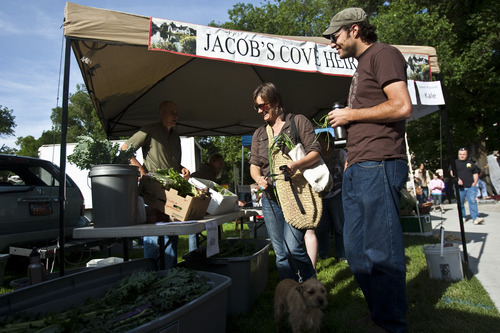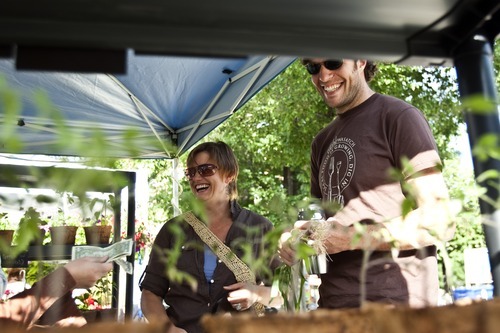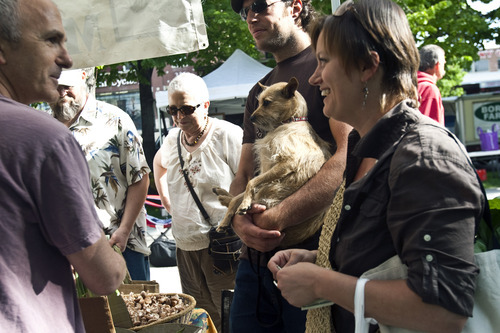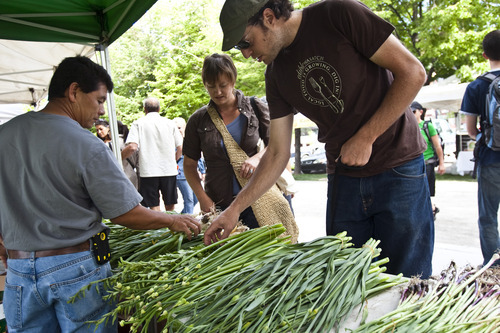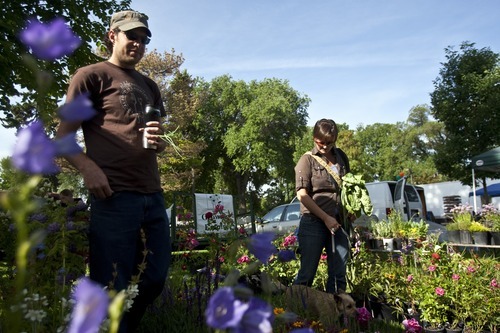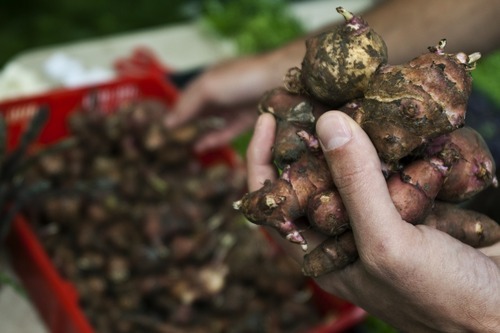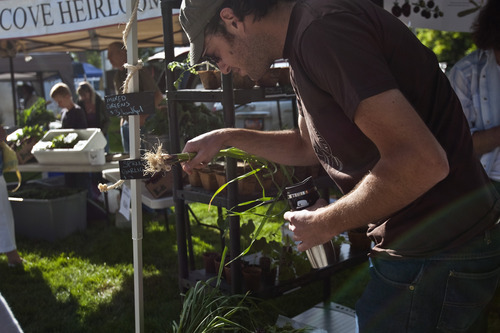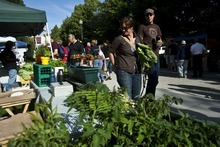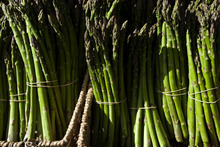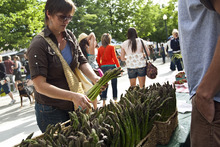This is an archived article that was published on sltrib.com in 2011, and information in the article may be outdated. It is provided only for personal research purposes and may not be reprinted.
What compels a couple from New York City, with successful jobs in commercial photography, to move to Utah and launch a free food magazine?
For Rachel Hodson and David Vogel, it was nostalgia and Utah's flourishing food scene.
In June, the couple celebrated the first anniversary of that magazine, Edible Wasatch, which is published four times a year — one for each season. The publication includes feature stories about Utah farmers, food producers and restaurants as well as gardening information and recipes. For each issue, 20,000 copies are printed and distributed to various stores and shops around the state. It's available online at ediblewasatch.com and through mail subscription.
Hodson, who grew up in Holladay, sees the magazine as a "love letter" to the community.
"People need to be proud of what's happening in Utah," said Hodson, 40, who writes, designs and finds advertisers for the magazine. Vogel, 34, takes photographs and tests recipes. They share the heavy lifting of distributing the magazine to stores.
The couple — who still take freelance work in New York to make ends meet — also get help from a dedicated group of food lovers. Managing editor Amy McCuaig volunteers her time, and local writers contribute stories for little or no reimbursement.
In a year, the co-editors have become well-known among the vendors at the Downtown Farmers Market and are regulars at local cooking classes and culinary events. Their magazine has become a must-read for farmers and foodies.
"They've really come in and made an impact," said Seth Winterton, marketing director for Utah's Own. "They have a passion for food and agriculture. They're all about preserving the culture of our state."
—
Home again • After graduating from Granite High School, Hodson left Utah and attended college in Seattle. She moved to New York City one month before 9/11. While there, she met Vogel, a New Jersey native with a degree in biology and a passion for the environment, food and photography. They both worked for many years producing commercial photography.
In 2009, Hodson returned to Utah — for what she thought was just three months — to fix up her childhood home in Salt Lake County's Millcreek area.
"No one was living in it, and it was really in disrepair," she said. "We came to fix it up, but we weren't sure what we going to do with it after that."
They soon discovered a vibrant local food scene with farmers markets, artisan food producers, Community Supported Agriculture programs and top-rated restaurants and chefs.
"I was pleasantly surprised to find a food culture," said Hodson, whose Utah food memories including working in the family garden and taking day trips with her father to out-of-the-way places for fresh-baked pies and corn on the cob.
As for Vogel, he liked his time in Utah so much, he wanted to stay permanently. "I felt cooped up living on the East Coast," he said.
A friend suggested they start a food magazine through Edible Communities. Joining the national publishing network was a natural way to combine their passions for food, sustainable farming and photography. However, it was a professional and financial risk.
"We are totally ordinary people, not financially well off or even as professionally prepared as we should be," said Hodson. "But we really felt it was important."
—
Doting parents • Tracey Ryder and Carole Topalian, co-founders of Edible Community, had received several emails from people wanting to start an Edible magazine in Utah.
"But Rachel and David really impressed us — especially their story of leaving Brooklyn and redoing the farm house," said Ryder, during a recent phone interview from Ojai, Calif., where Edible Communities began in 2002.
While Edible Wasatch and its sister magazines are part of a "franchise," local editors control the content.
"We're really good parents — we make sure all the kids are doing well. We give them whatever kind of support they need, but they take it and run with it," Ryder said. "That's the beauty of why it works."
Indeed, after seven years, Edible Communities has a network of 70 magazines, all successful. In May, the James Beard Foundation named the Edible network 2011's Publication of the Year — the first time the organization has given such an award. And while chefs and restaurants apply for the prestigious Beard honors, the publication award came out of the blue. "They literally picked us," said Ryder.
Those successes, said Ryder, make her confident that the Edible magazines and other print publications have a future, even in the era of the Internet and social media.
"Local community-based print is not dead," she said.
Hodson and Vogel are betting on that.
"If we give the life we value a little more attention, then we can preserve it," said Hodson. "It's not so much about going back, but moving forward in a way that sustains and preserves it."
Facebook: facebook.com/remix
Twitter: @kathystephenson —
Good reading
What • Edible Wasatch magazine, a quarterly.
Where • The magazine is free at food venues along the Wasatch Front. Subscribers can get it delivered for $28 a year.
Online • ediblewasatch.com


